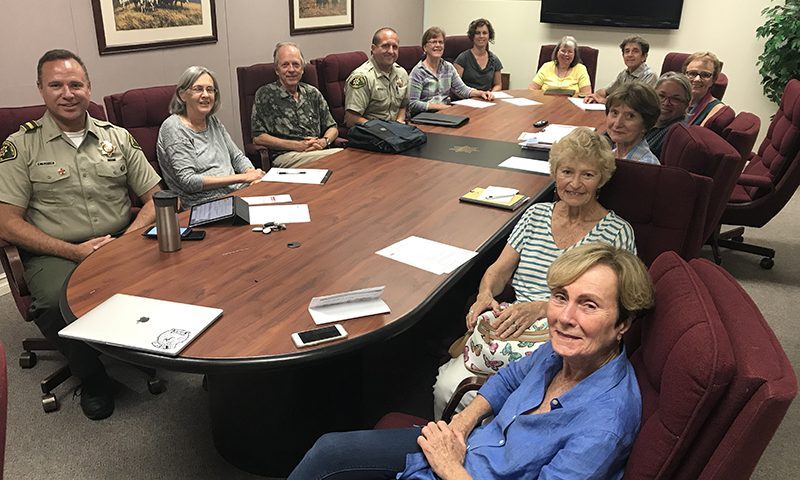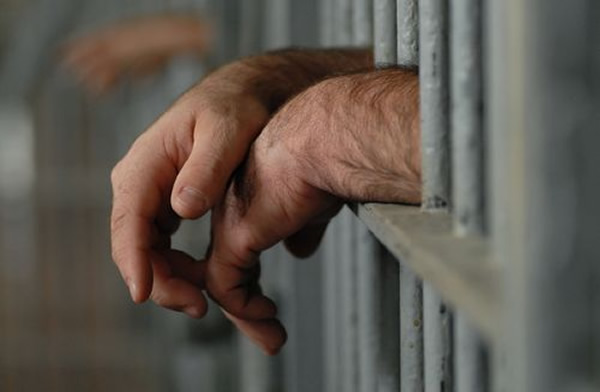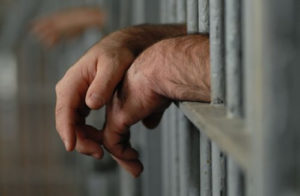Our County Supervisors have a once-in-a-generation opportunity to reduce the size of our jail to meet sustainable projected needs and make structural changes to create more humane living conditions that will help reduce recidivism – recycling through the jail more than once.
Santa Barbara’s current South County jail is obsolete and woefully inadequate. In January, 2021, a federal court lawsuit brought on behalf of jail residents against the Sheriff and County, resulted in a Stipulated Judgment that requires structural changes to meet bare minimum standards. Right now, our County Supervisors are deciding how best to spend dollars to improve our jail and, as well, improve criminal justice outcomes. We currently spend more than $88,000/year to house each inmate. With your vocal support, our Supervisors can also vote to include structural innovations enabling humane living/working conditions shown to “build good neighbors” and reduce recidivism. CLUE supports changes to reduce the jail size and increase community-based alternatives so our jail holds only those who need to be there to protect the public.
The obsolete South county jail was built to emphasize punishment: small cells, limited opportunities for exercise, impersonal guards, and overall conditions reasonably described as inhumane. As a result, at present about 70% of those in jail return again, demonstrating that this jail falls far short in its mission to safeguard our communities. By contrast, new jail innovations are based on open floor plans that offer direct supervision by jail staff. Improved living conditions are coupled with a new role for corrections staff: mentoring jail residents to become “good neighbors” who successfully reenter and stabilize in our communities. The new approach has been shown to reduce jail violence, improve living and working conditions and – astonishingly – reduce recidivism from 70% to about 20%. It also improves the health of correctional staff.
In Santa Barbara County there is now precedent for this: the soon-to-open North County Jail is built to embrace this model.
Our County Sheriff proposes to simply refurbish existing South County jail cells and other spaces to comply with minimum legal requirements, with no significant size reduction or structural changes. But our County Supervisors have now engaged a jail population expert to analyze whether the South County jail can be reduced in size and still meet sustainable future needs, and to better understand options for improving public safety,
Call to Action: On November 9th, the Supervisors will meet to discuss the jail and related community-based programs to reduce our jail population. Show up to voice public support for a humane jail remodel. Ask our Supervisors to delay remodel decisions and spending until the independent jail projection analysis is complete and can be considered. Offer direct public comment at the November 9th meeting, and/or submit a letter in advance to Supervisors recommending full public transparency of any proposed new plan, and the five system changes listed below. Ask Supervisors to commit to a more humane structure, replacing cells with more open living spaces and in-person supervision where mentoring by corrections staff can occur.
CLUE’s Criminal Justice Workgroup, faith leaders and our League of Women Voters partners have researched the issues and support the following:
1. Delay approval of final design and construction funds for any design contract services until the County obtains and has results from an expert jail population projection analysis. Urge our Supervisors to wait until the jail population analysis is available before voting to commit millions of taxpayer dollars.
2. Assure public input and transparency: establish specific opportunities for all stakeholders, including the public, to consider together options for the best use of the south county jail property.
3. Treat all jail residents humanely. Redesign the jail to allow for direct supervision. Provide opportunities for officers trained as mentors to work directly with residents, rather than remote. Research shows that this improves health and job retention for correction officers as well as helping residents. All units in the campus need access to an outdoor yard and a day room for socialization, reducing costly staff overtime escorting residents from cells to exercise spaces, classrooms, etc. Plans should also include pre-release transition housing with work-related day passes for those who will soon be reentering the community.
4. To help narrow the jail population to just those needed to secure public safety, provide improved jail intake assessment teams. At jail intake, the assessment team consists of the Sheriff’s Intake Staff, Probation Risk Assessment, and Public Defender Holistic Advocacy. CLUE Criminal Justice Workgroup’s research found the assessment team needs leadership and a coordinated effort rather than a disjointed silo approach. Focusing on Holistic Defense rather than on the criminal act prior to arraignment, will reduce the jail population by only incarcerating those who need to be there.
5. Create a live coordinated data system that displays available community alternative beds and services. CLUE Criminal Justice Workgroup’s research shows that assessment teams, officers, deputies, and other stakeholders do not currently have an online, accessible system showing available community-based alternatives to jail. A live coordinated data resource that identifies alternative available placements for non-violent offenders will better serve assessment teams, clients and our community.



